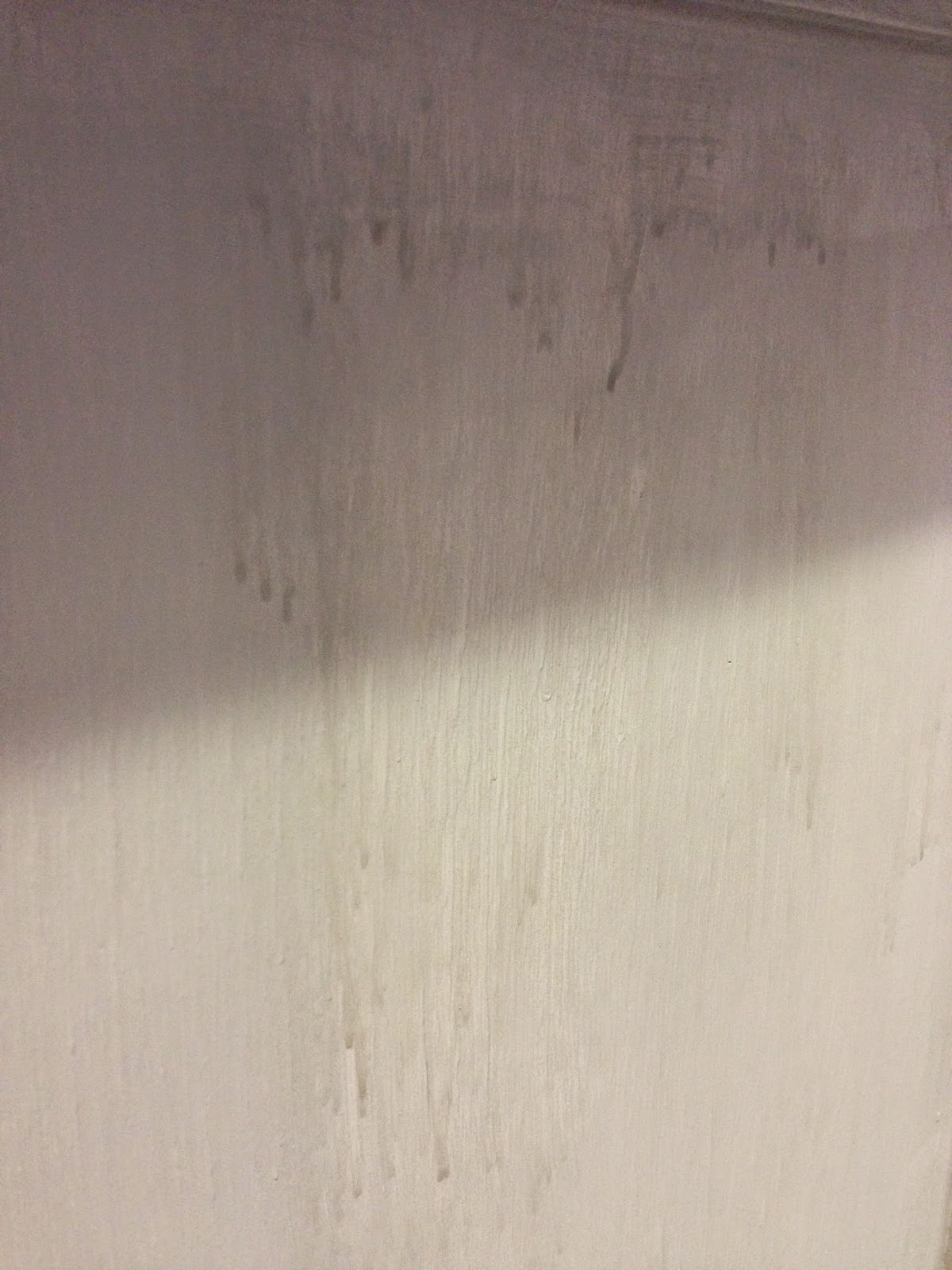 |
| Look at that beautiful stain on the finished product! |
The watery paint marks were easy enough to remedy: another coat of water dipped paint, brushed more evenly, and it was good to go. The wormholes, not so much. Drastic measures had to be taken.
 |
| The side of the table needed to be covered in a multi-purpose primer in order to cover those stubborn holes. Notice the creative juices. :) |
After giving the side panel a good coating of primer, I gave it another two coats of chalk paint, brushing with a water-dipped brush until it matched the rest of the piece.
Remember all that tape you saw on the wash stand in the first post? Well, for some reason or another I decided I didn't need to tape the inside of the doors. Big mistake.
The next step is waxing. Oh, the waxing. You know how people say using chalk paint is easy because you don't have to sand the furniture first? Well, chalk paint sucks just as bad, but on the other end. The waxing can be tedious, and you constantly have to take a step back to look at any spots which may have been missed - just like sanding.
But the waxing was done. I was so into it, I neglected to take any photos of the process. But I'll give you a little tut in word format: I happen to have Annie Sloan Soft Wax®, because it's relatively reasonably priced at the shop I buy the paint; it is a clear wax. You want to use a round brush to apply the wax, in a circular motion. This will allow the wax to penetrate the paint pores and any cracks and crevices.
But you also want to use the right amount. Google told me through a variety of sites that just a little is needed. Through experience I've learned that my little is a lot less than others' little. So I'm going to be honest with you - you don't want a lot of wax, but you also don't want too little. What you want is a nice medium coating on the tips of your bristles. After you've brushed it on, say maybe an area about a square foot, use a soft cloth to wipe any excess off. Each time you wipe, make sure you are using a clean side of the cloth. Otherwise, you may end up rubbing the wax from the cloth back onto the furniture, making not-very-nice-looking swirls.
The waxing is done! Guess what happens now? Uh-huh, another coat of wax! You don't have to give it another coat, but if you want good protection, I suggest you do it. Oh, did I mention you should really wait 24 hours before applying the second coat of wax? Well, you should.
After giving the wash stand its two coats of wax, it's time to get down to the nitty-gritty, looking the piece over thoroughly, fixing any blemishes you come across.
 |
| See that light area on the right side, above the handle? Yeah, I didn't think the paint job was up to par, so I gave another coat, then waxed it (post picture). |
The final step is - (oh my gosh I'm so excited!) buffing! Whoo-hoo! Who'dve ever thought buffing could be such fun? You want to take a couple of clean soft cloths and rub in circular motions around the entire piece, making sure you are using clean areas of the cloth. This process gives your work of art a nice little sheen. Ask your car-buddy friend; he'll know all about the benefits of a good body polish.
After fussing and prodding over the whole thing, it's time to take a look at this little gem we've been working on. Of course, that's only after putting the whole thing back together. Notice the gorgeous hardware and top back piece!






No comments:
Post a Comment